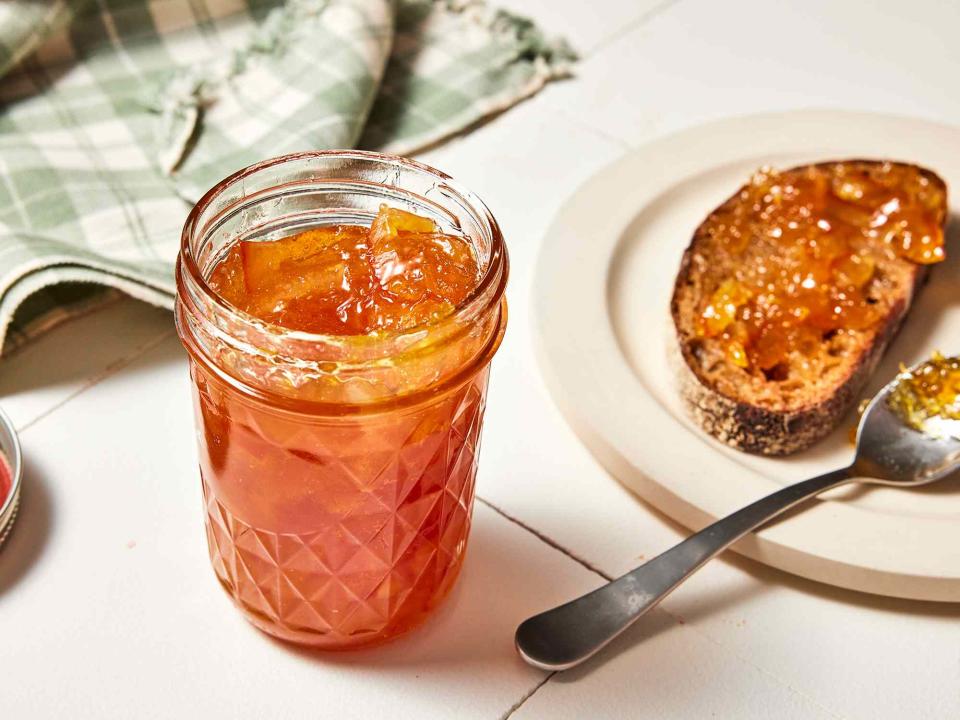Jam vs. Marmalade: What's the Difference?
How to navigate between jars at the breakfast table.

A joyful sight on any breakfast table and essential to rituals like afternoon tea, fruit spreads offer a sweet and tangy zip to breads and pastries, and allow for the enjoyment of seasonal produce long into the winter months.
But reaching for a jar labeled "marmalade" or "jam" might cause you pause if there's doubt as to their difference. Is jam the same as jelly? What is marmalade, really?
What Is Jam?
Jam is the most recognizable jar on the table. It's a thick, yet loose fruit-based spread that is easily spoon-able onto things, unlike jelly. Jelly, jam's cousin, is firm and needs to be spread. It's also made with just the juice of the fruit, rather than the whole fruit, as jam is.
To make jam, whole or cut up fruit (or even some vegetables) are cooked with sugar until completely broken down and thickened, the latter taking place thanks to the produce’s natural pectin, a starch found within fruits and vegetables that gives them structure.
Related:8 Ways to Use Up an Almost-Empty Jam Jar
Jam's texture and scoop-able nature make it a wonderful marriage with more "nooky" baked goods like some breads, muffins, and English muffins or crumpets. It works perfectly as filling in tarts, like the famous bakewell, as well as other baked goods because its texture holds up against heat. Jelly, if used in this manner, would simply melt.
What Is Marmalade?
To understand marmalade, it's best to first be familiar with preserves. Preserves contain the most physical fruit pieces of any of these jarred delights — either chopped into large pieces or whole (cherry, strawberry and fig being the most common whole-fruit versions). Preserves can be held in loose syrup, or they might be jammier in nature; and because sugar acts as a way to preserve the fruit, the name "preserves" is quite literal, indeed.
Marmalade is a type of preserves made with citrus. It includes the rinds in addition to the fruit and pulp. The fruit is boiled in water until soft, which removes any bitterness in the peel, before being cooked with sugar to thicken. Citrus fruits contain a large amount of pectin, making marmalade a bit gelatinous in texture, thick with larger chunks of malleable rind throughout.
Related:15 Recipes With Orange Marmalade
The name marmalade is from the Portuguese word marmelos, a quince paste used similarly. Traditionally, marmalade is made from bitter Seville oranges from Spain or Portugal, especially in the UK. Of course, other oranges, grapefruit, lemons, and kumquats also make delicious choices. Marmalade proves quite versatile in sauces, baked goods, and duck dishes, in addition to being spread on toast.
Summing Up The Spread
Both jam and marmalade are made through a similar process of cooking fruit and sugar. In the end, the difference lies in two things: the amount of fruit in the final product and the consistency. Jam is a bit lumpy and may contain seeds, but not many actual bits of fruit. Citrusy marmalade will have bits of fruit and rind dotted throughout or will be completely chunky.

